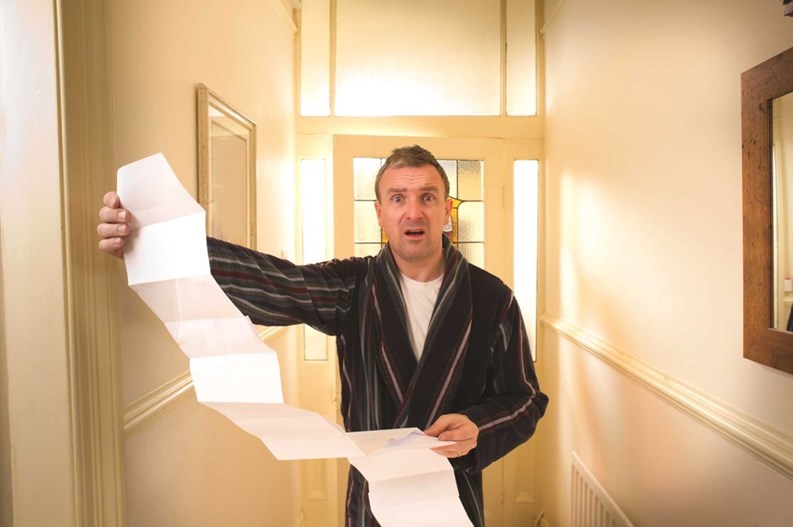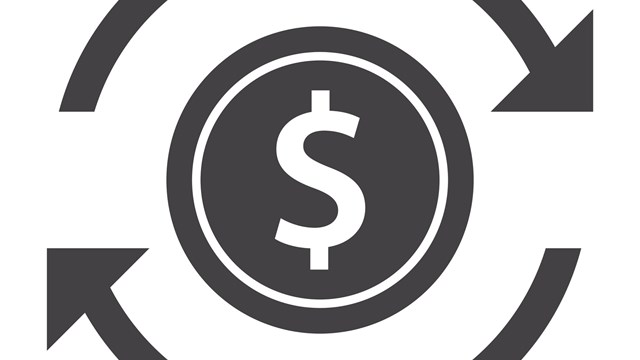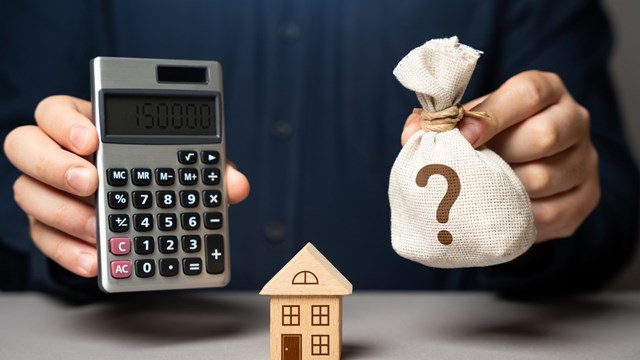It’s no secret these days that co-op and condo operating costs are going through the roof, so to speak, and boards and managers are all looking for effective ways to generate cost savings. Building management looks at fuel and energy usage regularly, but one often-forgotten area is water usage. Doing a cost analysis is a good way to determine if your metered building is paying its fair share or is being overcharged by the utility company or a city agency.
H2-Oh?!
Questions about water billing began surfacing last year when the New York City Department of Environmental Protection (DEP) began installing Automated Meter Reading (AMR) systems to monitor customers’ water usage. Residents in Eastern sections of Queens started seeing what they thought were inflated bills, and asked New York City Council members James Gennaro, D-24, and Mark Weprin, D-23, to investigate.
Action on the water rate hikes also took place in the state Assembly, where a bill, A02672, introduced by Assemblyman David Weprin (D-Holliswood) and co-sponsored by Assemblyman Ed Braunstein (D-Bayside), proposed to limit increases sought by the New York City Water Board to no more than 5% annually or the current rate of inflation. The bill currently sits in the Assembly’s Committee on Corporations, Authorities and Commissions.
Council Member Dan Halloran, R-19, who represents Whitestone, said such a measure is long overdue. “High water bills hit middle class families and homeowners in the forms of higher rents and maintenance fees,” Halloran said. “They’re another hit to the already-vulnerable pocketbooks of Queens families, who are struggling to make ends meet as it is. By limiting the amount the rate can go up every year, we will force the Department to tighten its belt and cut waste on the massive projects that have put it in this situation."
The nearly double-digit rate increases the past five years are not only hitting Queens’ residents, says Alan Rothschild, who is the president of Vantage Group, a tri-state water conservation and cost management company. Increases passed by the New York City Water Board were 9.4% in 2006-07; 11.5% in 2007-08; 14.5% in 2008-09; 12.9% in 2009-10; 12.9% in 2010-11; and the aforementioned 7.5% on July 1, 2011.The July 2011 increase will make 2012 the 15th consecutive year with a rate hike,” adds Halloran. The average Queens family will now pay an extra $61 annually in water fees, but others may pay up to $877 more per year.
Easy Come, Easy Flow
According to Greg Carlson, a property manager and the executive director of the Federation of New York Housing Cooperatives & Condominiums (FNYHC), water and sewer rates have definitely escalated over the past decade. “Most of the co-op and condo buildings in New York are billed for water and sewer as part of their maintenance/carrying charges. The building,” he explains, “will usually pay for their water and sewer in two ways: the water usage is metered and the building pays for usage of water and sewer, or the building pays on a frontage basis. Some buildings changed from a frontage charge to a meter charge if the amount they paid on the frontage was more than the meter charge.”
Unlike electricity billing, which can be assessed for a building as a whole, or billed to individual units through individual submeters, water use is typically billed to a building (even a multifamily high-rise) as a single entity. It then falls to building administrators to determine how to divvy up the charges among residents.
According to Michael Topper, president of Bronx-based utility consulting firm AquaAudit, the one area of water metering that DEP is not involved in is submetering. “If a building is a mixed-use property on metered-billing—meaning it has several commercial stores below and residential apartments above—and the owner wants to bill each commercial tenant individually for their water usage, he or she would have to install separate individual submeters for each tenant.”
According to Farrell Sklerov, a spokesman for the DEP, “We have roughly 835,000 customers, including single family homes as well as entire co-op or condo buildings. In almost all cases, the bill is based on the main building meter. The building is then responsible for paying the bill and determining how to assess charges to individual tenants,” he says.
Running the Numbers
Much like an energy audit, a water cost analysis involves an expert assessor coming to your building, vetting the installed metering equipment, going over bills with a fine-toothed comb, and keeping a sharp eye out for overages, inconsistencies, and other trouble spots that are likely costing your building community money.
Once a firm like Vantage Group is engaged, the company does a complete cost analysis with the aim of reducing clients' water consumption and saving them money—10 to 20 percent a year on average, according to Rothschild, and sometimes even more, depending on the situation.
In the process, Rothschild says they often discover past overcharges which they retrieve from the DEP on behalf of the client, but their primary focus is on saving money in the future. He adds, "We have become very involved in new technology known as Automatic Meter Reading (AMR), where meters can be read remotely over telephone lines. This is useful both as a conservation tool and to monitor the DEP's billing. It’s valuable as a conservation tool because we can use the meter reading to warn a client of a significant uptrend long before they get a huge bill from the city."
The DEP’s AMR system consists of small, low-power radio transmitters connected to individual water meters that send daily readings to a network of rooftop receivers throughout the city. In most cases, the transmitters are placed where water meter remote receptacles are currently located. According to Sklerov, AMR technology has been a great help on both sides of the utility equation—municipal and private. “To date,” he says, “roughly 93 percent of all city buildings are billed on the AMR system. Each water meter is wired to a Meter Transmission Unit (MTU) that reads the meter either hourly or four times a day depending on its size, and transmits those readings to a network of rooftop Data Collection Units (DCUs) from which the DEP receives the data. Reads for customers on the AMR system are based on actual water use nearly 100 percent of the time, compared to 85 percent average before the AMR system was adopted. In the past, those reads were often estimated because lack of access to the property prevented us from visually reading the meter,” he explains.
Despite the new and more-accurate technology, hiccups do occasionally happen—like the situation in Queens last year. Those residents were upset about bills they claimed were inaccurate and inflated. “We take all requests to review the accuracy of a water and sewer bill seriously,” says Sklerov, “however, in the recent instances mentioned in the press, the disputes were without merit. Though no one likes getting a bill that is higher than anticipated, the new transmitters are sending accurate reads.”
And good as the new technology is, Sklerov cautions residents not to abdicate their responsibility as homeowners, and to pay attention to both their usage patterns and their utility bills. “The good news is that today, customers have a number of tools at their fingertips to help them better manage their water use,” he says. “Customers should go to www.nyc.gov/dep and sign up for a free My DEP Account. There they can view their consumption online and see what it is costing in near real time, eliminating any surprises about the bill when it arrives.”
The Forgotten Utility
“The building manager or the building owner really hasn’t got the time to figure out what’s going on in their building,” adds George Conner, president of Reactel +MDAS, a New Haven, CT-based technology and energy monitoring consulting company, which has partnered with Vantage Group. “They typically will rely on the quarterly bill—and if it's an actual bill rather than an estimate, they have to compare it with previous bills. If it’s not too far off, they’ll typically just pay it, regardless of whether it’s representative of the actual usage.” If the usage is marginally higher, they might just “turn a blind eye” and think it’s a blip, notes Conner. Board members, too, are often in the dark as to how high their water usage actually is, and don’t know what an appropriate benchmark would be. “We call water a forgotten utility,” he says. “It’s typically been a blow-by-blow part of the budget, but it can be a pretty sizeable charge.”
For buildings and residents who want to take control and run a tighter ship when it comes to utility usage and billing, the DEP offers its Multifamily Conservation Program, or MCP. Though not yet common outside some HDFC co-ops and condos, the MCP uses submetering to allow each unit to be billed individually for its own utility use, and enables unit owners to pay only for what they personally use—and not a penny more. “Most co-ops and condos tend to have relatively small population densities, so they are usually doing well on metered billing,” says Sklerov.
Contesting Your Bill
Rothschild says that while there is no real formal way to challenge what you might believe is an unusually high water bill, you can ask for a bill adjustment. Boards or managers can write a letter to DEP, and if inaccuracies are found final appeals go through the Water Board, he says. According to DEP, the Water Board does offer customer assistance programs to help reduce large bills. The “Leak and Waste Forgiveness Program” is offered to customers that through no fault of their own receive a large bill due to an extraordinary leak on their property, and obtained the services of a licensed plumber to complete the repair. The program will compare the high bill to other more normal bills within a certain time period and determine if an adjustment or reduction can be made.
“For the average New Yorker, contesting billing errors at the DEP can seem a daunting, time consuming task,” says AquaAudit’s Topper. “So your interest is best served by hiring a company that knows where to look and what to look for in terms of typical problematic billing issues and discrepancies, and that knows how to navigate through DEP’s intricacies with established contacts and is networked into the regulatory framework. Most auditing companies work on contingency and receive a percentage of any savings obtained, so there is no up-front cost or out-of-pocket expense to have a service perform a water audit. They’re only paid on their result—not their effort.”
Topper adds that some building owners turn over their entire portfolio to an auditor on a regular basis. “An extensive audit can yield a very successful outcome resulting in a huge savings, credit or refund to a building owner.”
In addition to paying close attention to bills and month-to-month usage, it's important that building administrators and residents alike take things like leaks seriously. “Even a running toilet can cost somebody three or four or five thousand dollars a year if it’s not taken care of properly,” says Rothschild. “Now in a small building, obviously that can hurt them quite a bit. If a ten-unit building is using, say $6,000 a year worth of water, and there’s one running toilet that’s costing them three or four grand, that can almost double their water bill.”
Richard Apell, controller for Argo Real Estate, a Manhattan-based management firm, says that in the case of one of his company's client buildings, on-the-job vigilance, plus new technology translated into major savings on water costs.
The Wedgewood House is a condop at 69 Fifth Avenue in Manhattan. According to Apell, in the early 2000s, the building ordered what's known as a Honeywell survey in order to detect any leaks that might be present in the building. “The city offers this to buildings and they conduct it at their own expense,” says Apell. “The surveying company comes into each apartment and check the flushometer and showerheads in all the bathrooms, all the plumbing fixtures, sinks, toilets and so forth. In this case, since there was a water cooling system they checked those condensate pans as well—anywhere where there is water being flowed through and used, they’ll check those fixtures. The study conducted at Wedgewood House determined that there were indeed leaks. So we gave that information to the superintendent, he went in and took measures to stop the leaks, and the water billing went down dramatically.”
Apell makes a point to note that in order for such a survey to be accurate and useful, inspectors must have access to 75 to 85 percent of the building's units.
Staying Afloat
With so many building communities struggling to stay afloat financially, and individual residents cutting back on expenses anywhere they can, it only makes sense to stay on top of controllable expenses—like water usage. Obviously everyone needs to shower, cook, and clean, but with smart conservation and attention to billing details, nobody needs to pay more than their fair share of water expenses.
Debra A. Estock is managing editor of The Cooperator. Staff Writer Christy Smith-Sloman contributed to this article.







2 Comments
Leave a Comment